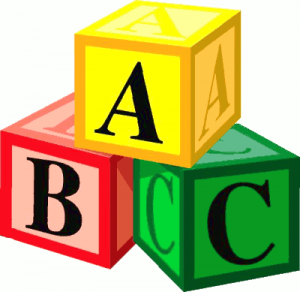So, You Want To Make a Web Site (Simple Basics)
 You want to start a web site? Here are some ABCs to help you.
You want to start a web site? Here are some ABCs to help you.
1. Approve a Domain Name.
While there are places where you can have a blog, or a simple site, with a subdomain of someone else’s domain (such as blogger.com or weebly.com), it is generally preferred to have your own domain name that reflects you. If you have a business, it’s good to use the name of your business; if it is common name, it often helps to add your location. However, shorter is usually better, unless it makes it too difficult to remember.
2. Buy your Domain.
This goes along with the next one; in most cases, you can buy (register) your domain with the host you choose. Registering a domain is, essentially, leasing it for a year at a time. The length of time can vary from one year to ten years, and the charge is simply multiplied by the number of years. Different registrars charge different prices, usually between $8 – $20. Our standard price (for .com, .org, and .net; others may vary) is $12.50 per year.
3. Choose your Host.
The web host is the company that has the computer that holds your site and serves it to the internet users. Hosting is a separate charge from the domain name, and is usually a monthly charge, often starting around $4 and going up from there, depending on the services offered, space available, and company policies. Our basic standard account is $10 monthly. You can see what we offer at http://rdcsshosting.com
4. Decide your Style and Colors.
Usually two or three colors at most will help to make a more cohesive site design. Whether you plan to create your own site or have a designer do it, this is something you will need to choose. Look at sites you like and try to determine what it is you like about it, and how you can make that work on your own site.
If you choose to do it yourself, there are two ways to do it. You can learn HTML and CSS and do the coding, or you can use a WYSIWYG (What You See Is What You Get) editor, which will allow you to work within a premade framework. Many hosts offer built-in site builders that will help you to get started.
5. Edit, Tweak, and Test your Site.
This is, technically, done during the process of creation, but will often last a bit longer than the actual design stage. You may want to look at it in several different browsers (Firefox, Opera, Safari, Chrome, and Internet Explorer). The problem with IE (Internet Explorer) is that each version has its own foibles and a site that looks great in IE10 may look terrible in IE8. There are sites on the internet that will allow you to put in your domain name and see how the site looks in several browsers, such as browsershots.org.
